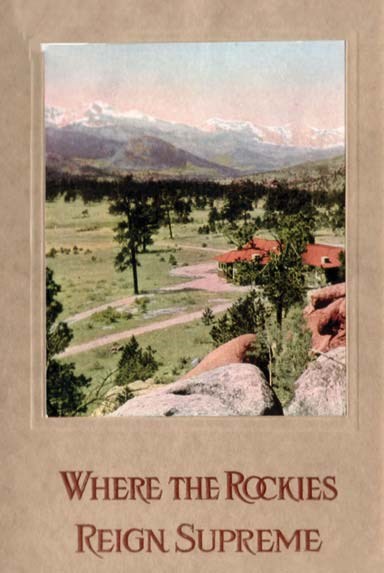Last updated: November 8, 2022
Article
A Vast Moving Caravan: Roads and Tourism

The Question: How have roads and road building shaped the history and landscape of the park?
When Congress created Rocky Mountain National Park in 1915, the nation was on the verge of transformation: the automobile captivated the American public. Leaders of the newly minted National Park Service correctly predicted that Americans love of national parks would be closely tied to Americans love of automobiles. Local businessmen, too, realized that having good roads would bring more tourists, generating more business for their communities. Even the Union Pacific Railroad realized that good roads meant increased revenue. Families could ride the rails to the region and then travel by road to the destinations promoted therein. This coalition of entities—the National Park Service, local businessmen, and the railroads—promoted the construction of good roads in the park. Was this a successful campaign?
The Project: Analyze the environmental history of road building in the park.
Jerritt Frank, in his doctoral dissertation for the University of Kansas, used the lens of environmental history (the interaction of humans and the environment over time) to examine how tourism was marketed in the establishment and development of the park. Dr. Frank reviewed the extensive literature pertaining to automobile tourism in the American West including many original documents such as guidebooks, brochures, advertisements, newspapers, and official reports. He traced the history of the park and its roads by evaluating how the lobby for better roads developed and the subsequent improvements that were made to connect tourists with nature.
The Results: Successful completion of a good road system essentially made nature accessible to millions, but it had unintended consequences.
The coalition of the National Park Service, the railroads, and local businesses such as the Rocky Mountain Transportation Company made it not only possible to drive through the park, but also a desirable activity. The coalition saw great political and economic benefits in luring tourists to the park, creating a satisfying journey, and leaving families longing for another trip. A good road system allowed people close contact with the natural world. But constructing a good road was just the first step. The park also had to enhance the visual appeal of routes by covering old routes, thinning selected trees to enhance views, undertaking roadside cleanup, and removing structures. By erasing human disturbances in the viewshed beyond the road, visitors could experience a natural landscape. The coalition’s advertising—often featuring photos of motoring tourists—established an expectation of what visitors would do during a park visit.
Their campaign was successful. After World War II, visits to the park spiked, and those visitors used the road system to connect with nature. But the promotion and building of roads encouraged visitor behaviors that would later threaten the pristine parkscape the coalition worked so hard to create.
This summary is based on published, peer-reviewed and/or unpublished reports available at the time of writing. It is not intended as a statement of park policy or as a definitive account of research results.For more information on the park’s research program, see www.nps.gov/romo
Written by: Bert Cushing and Cheri Yost Date: 07/15/2009 Photo credit: Union Pacific Railroad, in the collection of Rocky Mountain National Park
